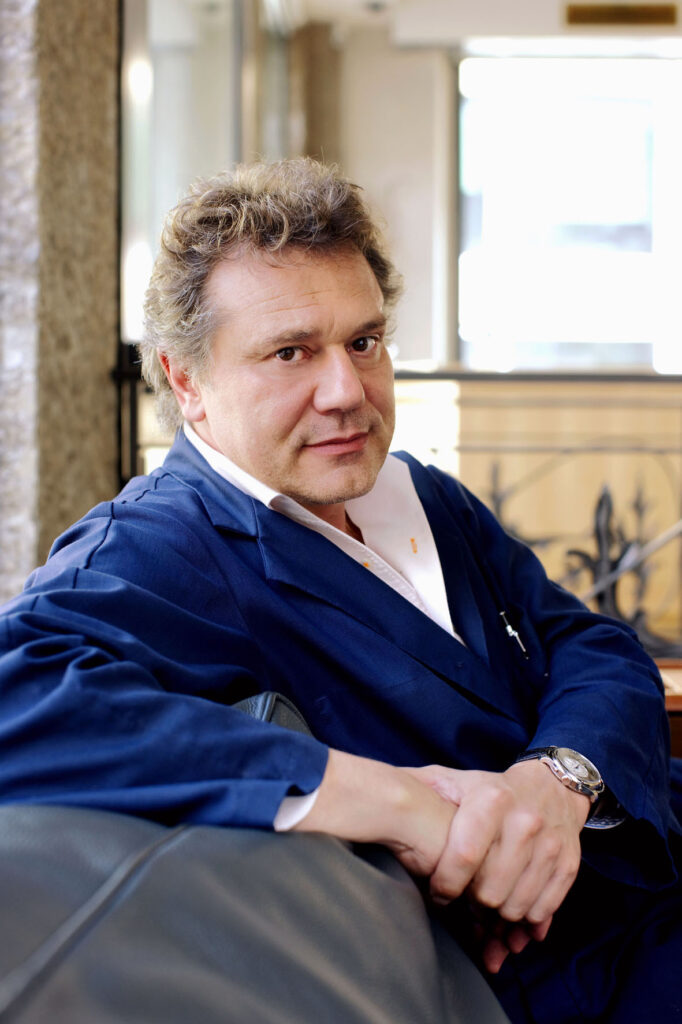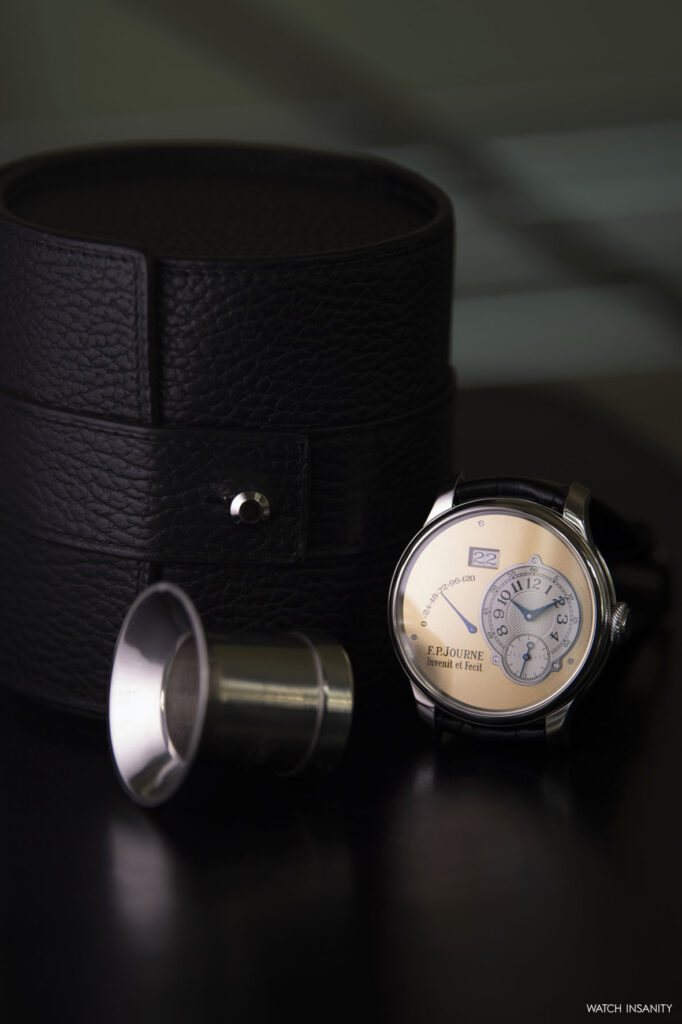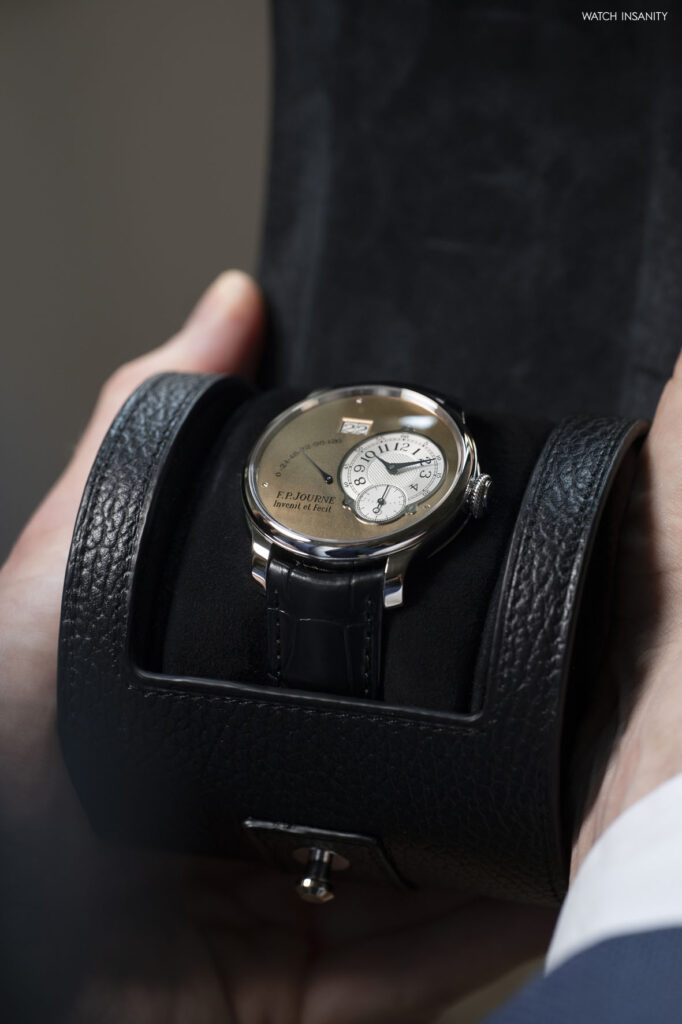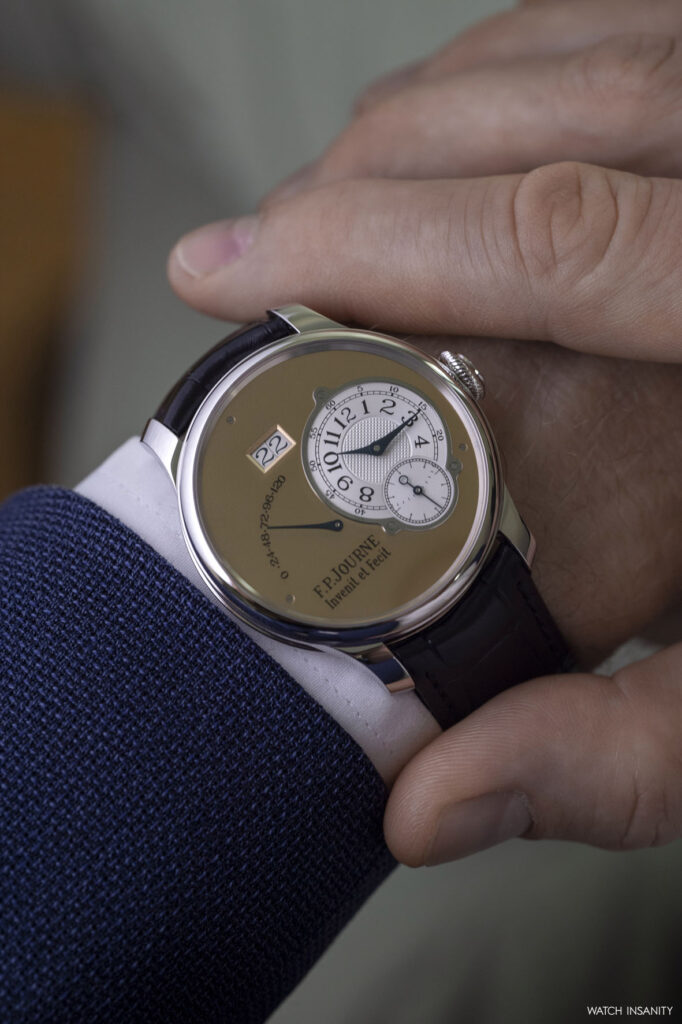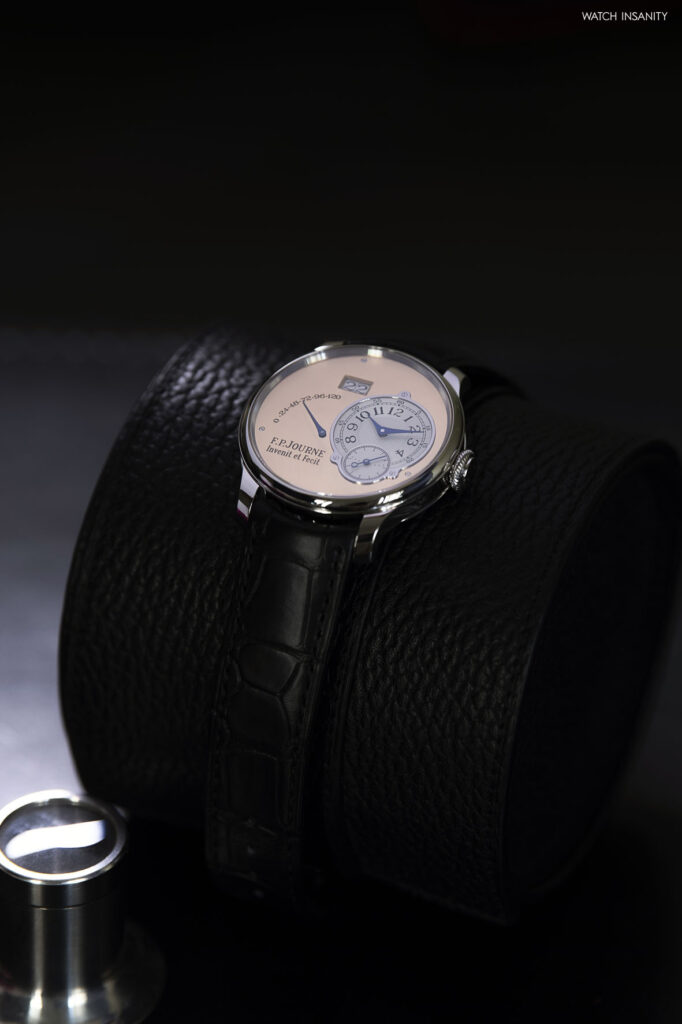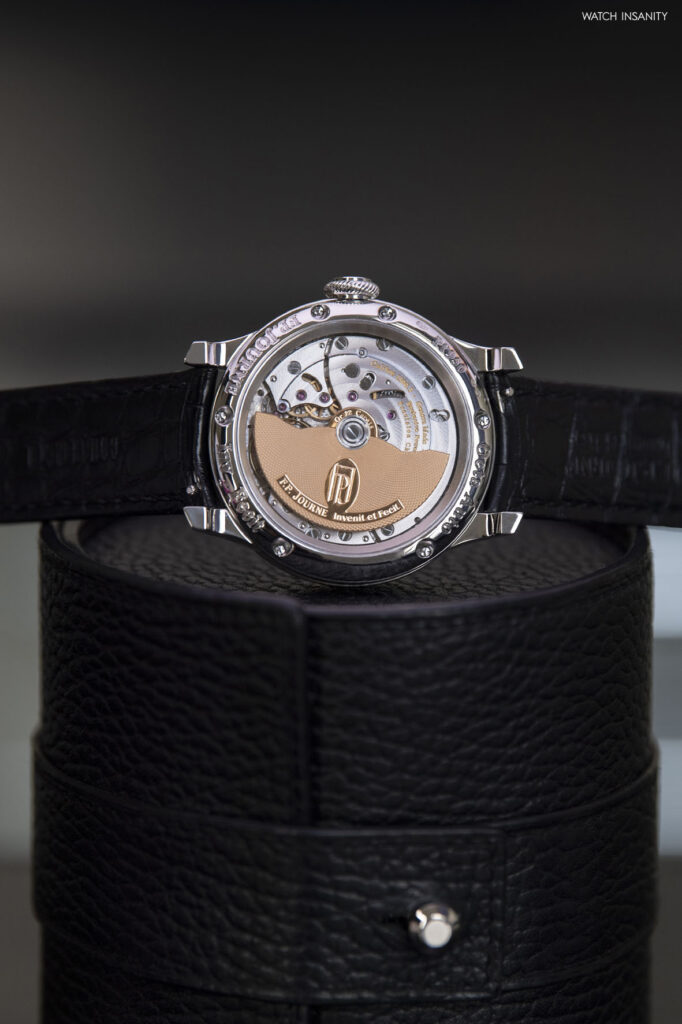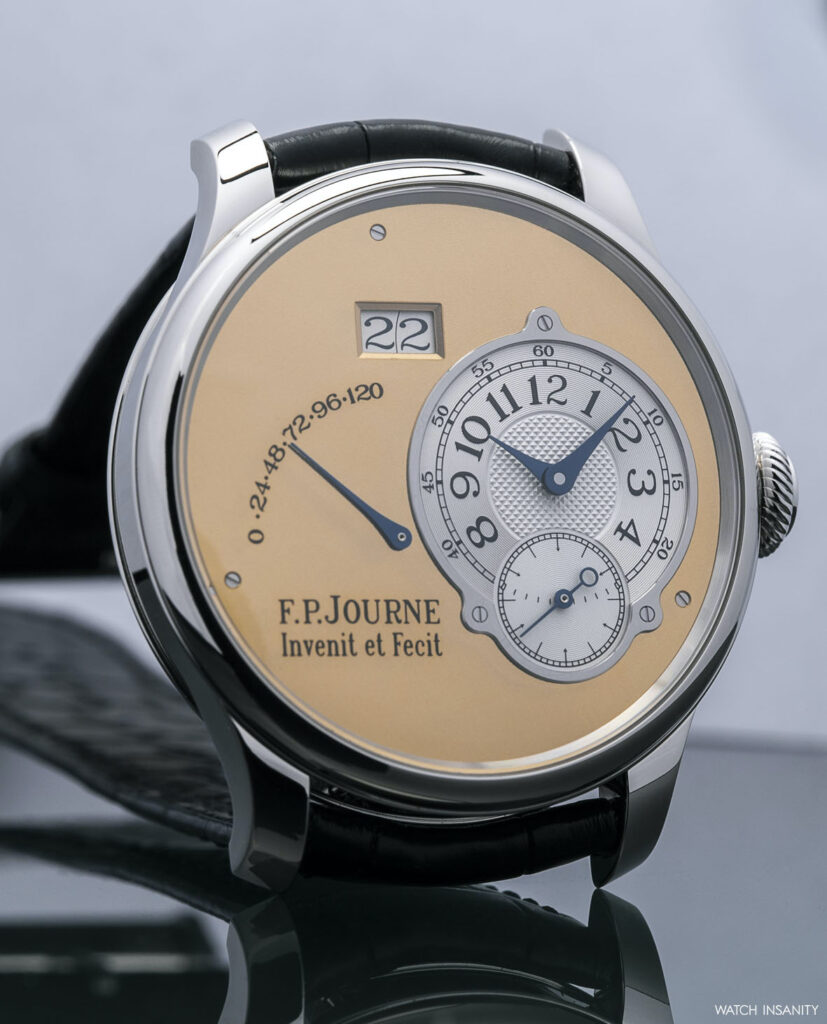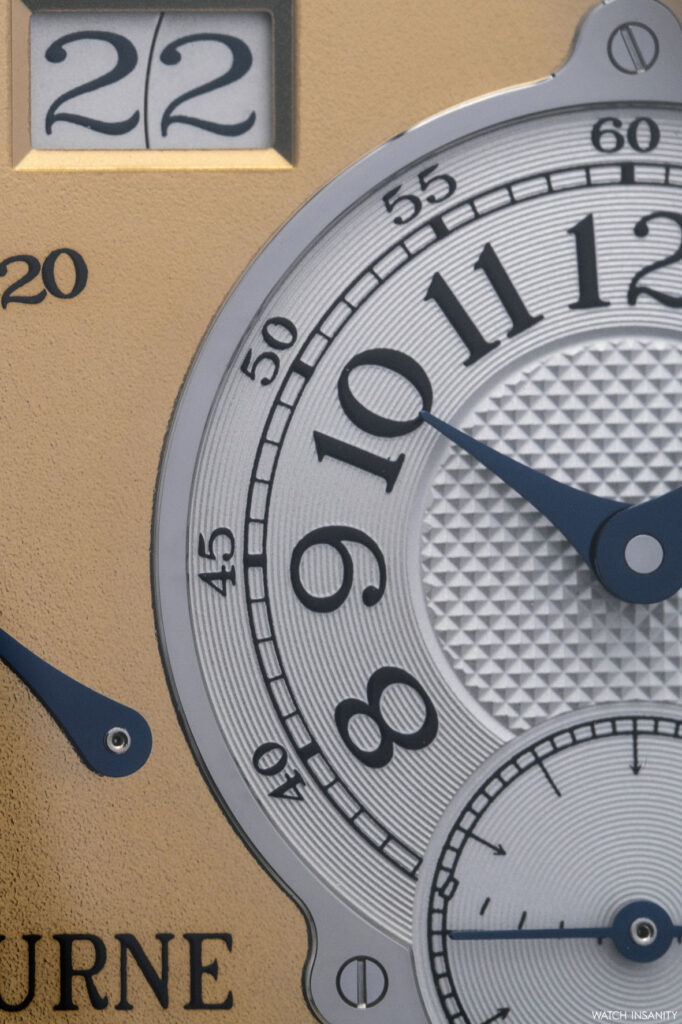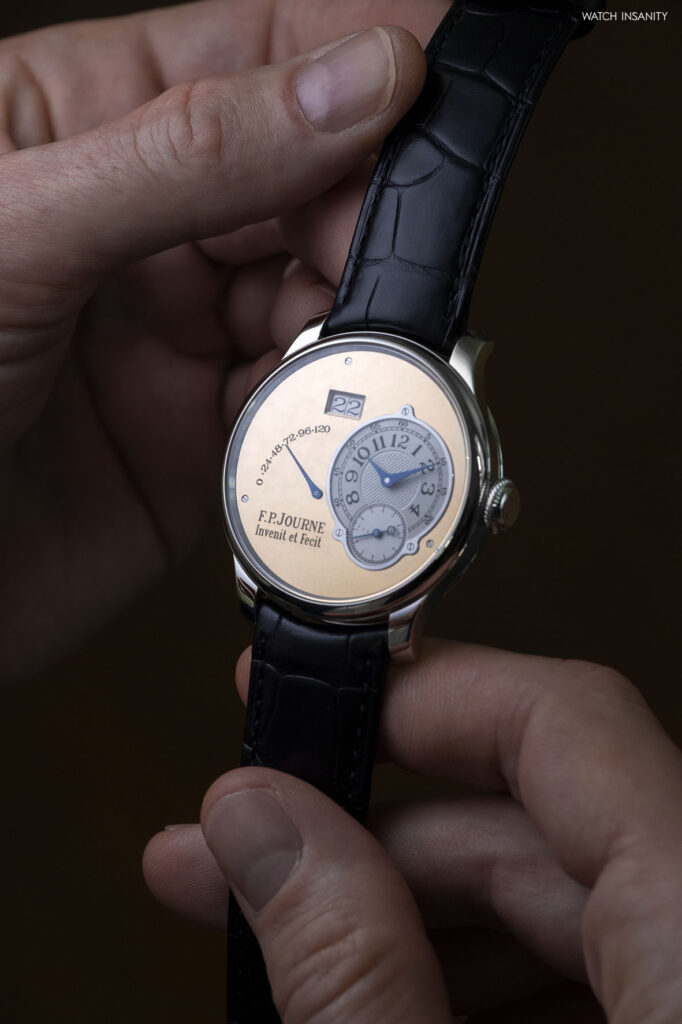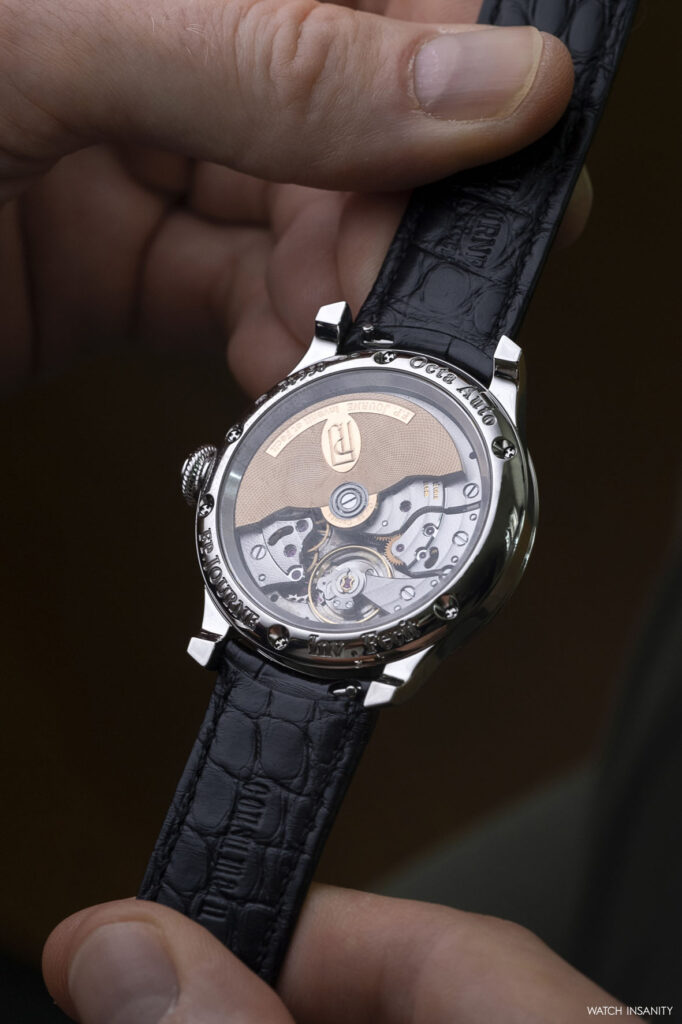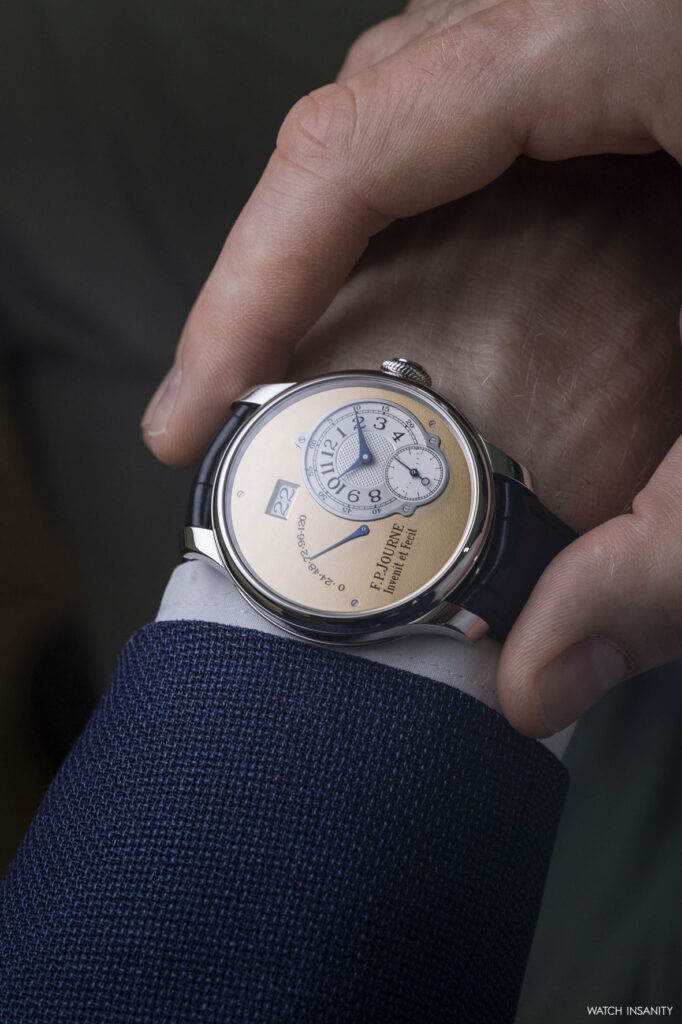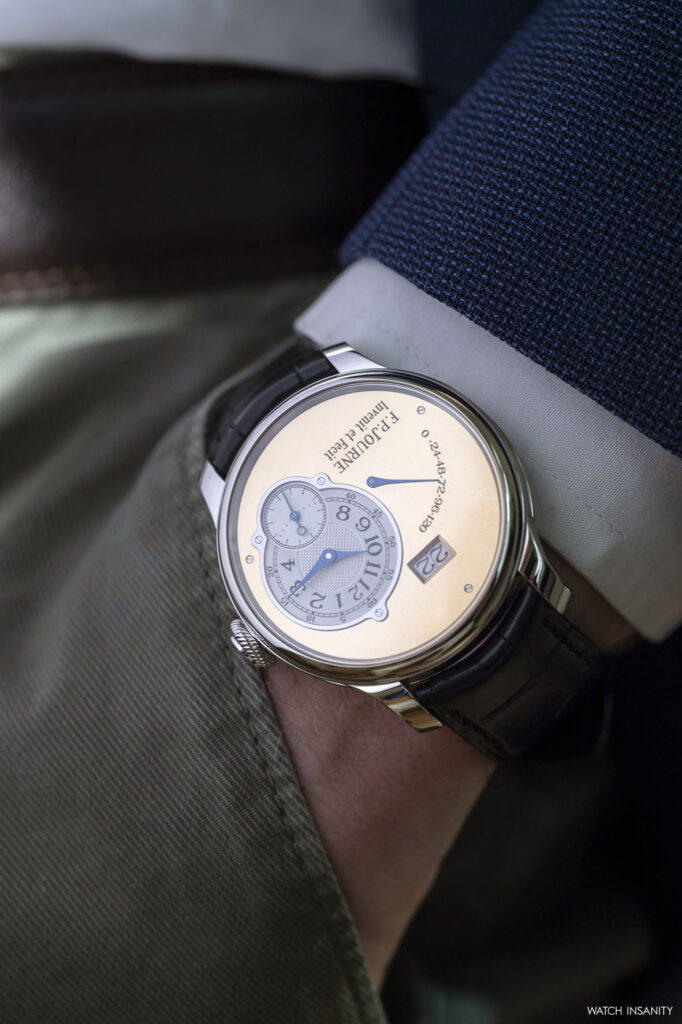F.P. Journe Automatique And The Ideal Of Time
6 July 2022Writing about a François-Paul Journe watch is never easy, even if it is about the Automatique and not a “grand complication”. Because each watch created by the Master from Marseilles is like a grand complication due to its very high technical and artisan features. And you can only deal with a masterpiece if you have patience and humility.
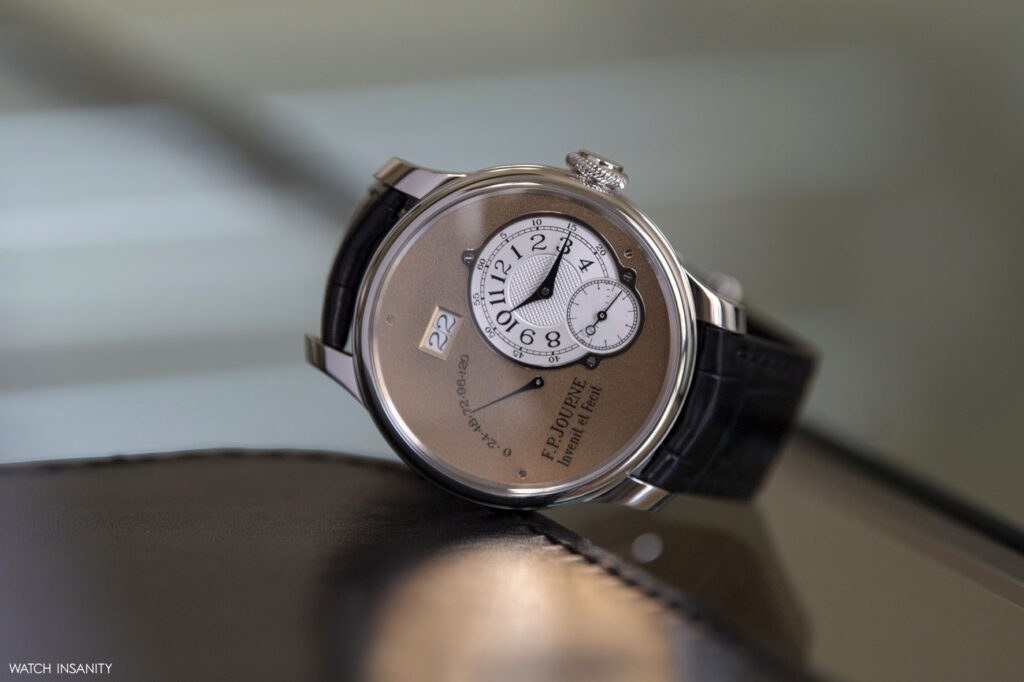
OCTA: A “NORMAL” CALIBER?
The Automatique comes from afar not so much in time – since the project began in 1994 – as much as in Journe’s mind. As a “grand complication master,” he had created in 1999 the Tourbillon Souverain and the tourbillon regulator with constant force and, a year later, the Chronomètre à Résonance. But he was aware of the fact that, in addition to these solutions, calibers with functions suitable for everyday life were also needed. Better if automatic calibers.
We deliberately avoided using words such as “simple” or “normal” to define these functions, because they do not fit François-Paul Journe’s watches, not even for a three-hands like the Automatique. If the basic idea for one of his pieces can be simple (in hindsight, most of the ideas from which the watchmaking masterpieces are born are simple), the path he chooses to achieve it is never the most trivial.
And when he began to think about an automatic movement, he started by observing the best watches available on the market at the time (it was in 1994), confident that he would be able of improving them. And he drew the first sketches of the movement on the paper placemat of a Paris bistrot. Because genius does not sleep, and creativity must be supported whatever your whereabouts.
FRANÇOIS-PAUL JOURNE’S INTUITION
Improve, we said. In an automatic movement this meant, for François-Paul Journe, guaranteeing power autonomy for at least five days without compromising chronometric precision. A result that could be obtained with a few – so to speak – complementary tricks: creating a mainspring as long as possible, while working on the oscillating weight and the balance wheel to make the most of their potential.
The idea of lengthening the mainspring is not new. In the bell tower clocks, the height of the tower allowed the winding system – consisting of ropes and counterweights – to be developed in length, increasing autonomy. Others before François-Paul Journe had thought about this and tried it, but the increase in the power reserve involved a noticeable decrease in accuracy.
Journe studied a spring over a meter long and one-millimeter wide, integrated at the same level as the gear train and escapement in a single barrel, and with a low spring constant. Let’s not forget that this is an automatic movement, whose winding is entrusted to an oscillating weight. Just the other component, along with the balance wheel, on which Journe worked.
He worked on the oscillating weight, making it in 22 carat 5N red gold, off-centering it in order to integrate complications on the same plane as the rest of the movement. At the same time, he found the right size for the balance wheel: if it had been too small, it would have made the caliber too sensitive to shocks, if it had been too large, it would have made the whole regulating organ too rigid.
THE 2011 OCTA RÉSERVE DE MARCHE
The result of three years of development and work was the presentation, in 2001, of the automatic caliber 1300; with a recharge cycle of only 90 minutes, it ensured an autonomy of 120 hours. It would become the basic caliber for the entire collection, up to the Automatique. After all, as François-Paul Journe says, “The Octa is a complete movement that requires no further modification due to its almost unreal performance.”
In 2001, the first Octa Réserve de Marche watch – which became one of the master’s masterpieces – had the hour indication off-centered towards the winding crown, so that it could be read even by pulling up the shirt’s cuff only slightly. The yellow gold dial had screwed silver counters, the power reserve indicator, the grand date. The 38mm case was in platinum or rose gold.
AND COMES THE AUTOMATIQUE
Last year, in Geneva, the timepiece and its caliber were the protagonists of an exhibition dedicated to the 20th anniversary of the movement. The celebration watch for this anniversary is the Automatique, in a limited edition of 99 pieces inspired by the Octa Réserve de Marche, which costs 68,000 francs excluding VAT.
The case is in 40mm platinum and the satin yellow gold dial houses the off-centered hour and minute indications with small seconds, on a silver counter screwed to the dial by a steel frame. The large date with double window at 11:30 switches instantaneously and has been enlarged compared to the 2001 watch, to make it more legible: it now measures 4.7 x 2.6 mm.
At 8:30 there is the power reserve indicator, with an elongated drop-shaped hand. A typical F.P.Journe shape, which is the same as that of the hours and minutes, while the small seconds hand is straight, with the open-worked counterweight. The hours and minutes are also larger than those of the Octa Réserve de Marche.
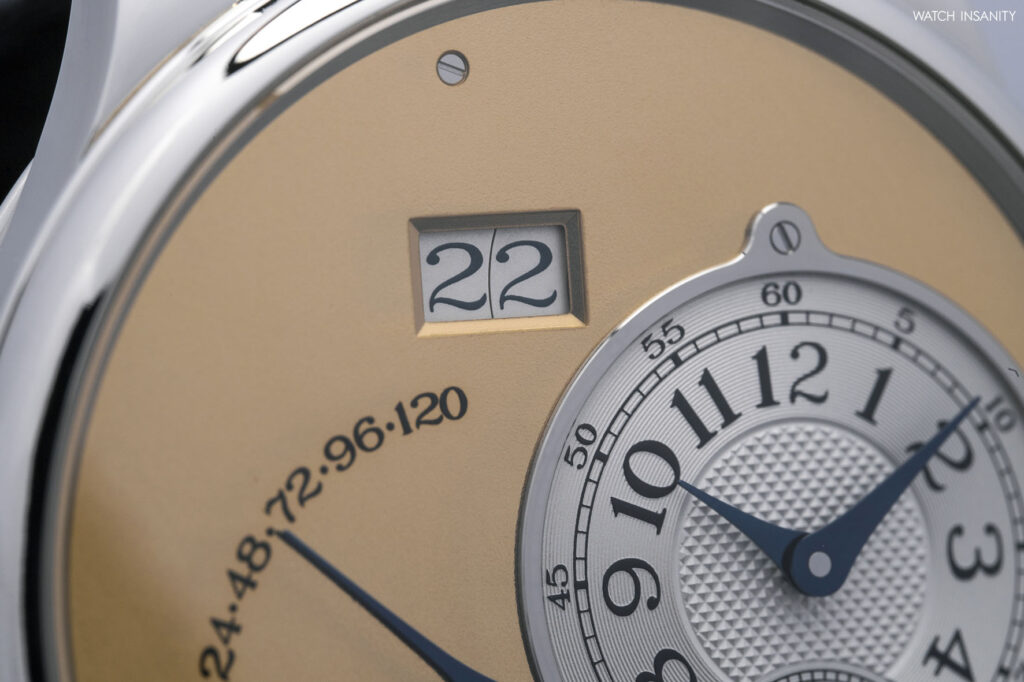
The attention paid to the off-centered hour and minute dial underlines the accuracy of François-Paul Journe’s watches also from an aesthetic point of view. It has a double finish: the Guilloché Clous de Paris in the center, and the concentric one on the railway minutes and seconds track, as well as in the small seconds counter.
A CALIBER IN PLAIN SIGHT
The sapphire crystal case back, of course, allows to peek at the F.P.Journe automatic caliber 1300.3 in rhodied brass. We have extensively written above about the development of the caliber 1300; its off-centered 5N 22 carat gold oscillating weight benefits from the last of the three evolutions that the movement has undergone in 20 years. The system has gone from bidirectional to unidirectional winding – more efficient for a fast spring tensioning – through a self-locking ball bearing system.
The oscillating weight is finely worked in guilloché, as are the other parts of the movement: circular Côtes de Genève on the bridges, graining on the base plate, polished screw heads with chamfered slots, pegs with polished rounded ends, hand-polished and chamfered steel components.
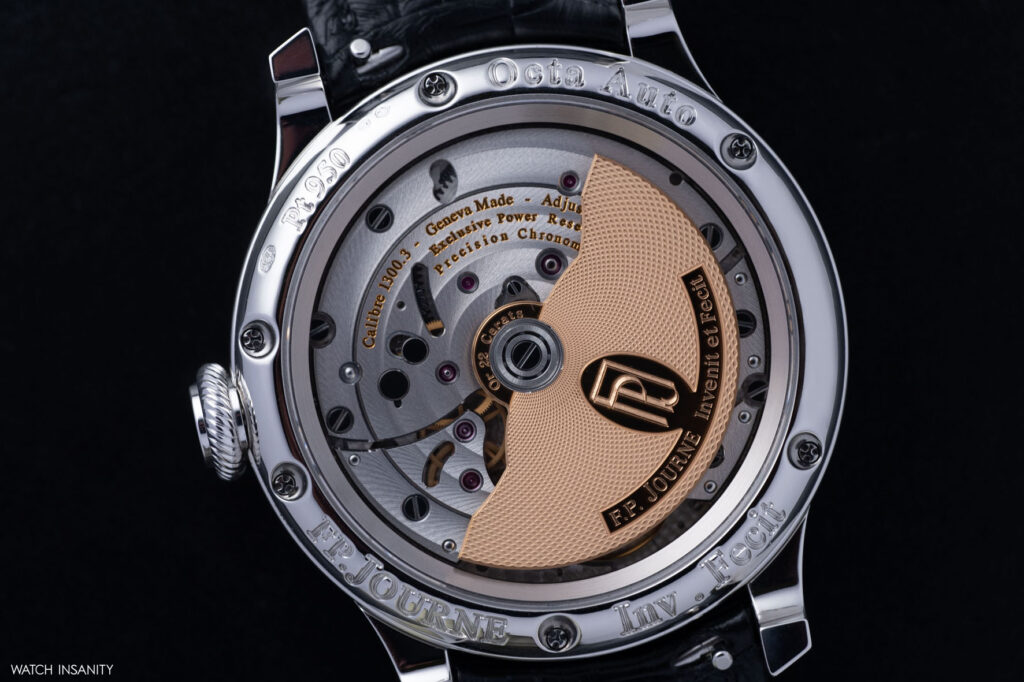
The flat spring balance has four adjustable inertia weights that can be used to correct the oscillation frequency. Since it is indexless, the adjustment is not made by acting on the length of the mainspring but on the inertia of the balance wheel, by moving the screws.
FRANÇOIS-PAUL JOURNE’S PERSPECTIVE
In short, a perfect machine, both in terms of aesthetics and mechanics. As you can see in the pictures of our shooting, made possible thanks to the collaboration of GMT “Great Masters of Time”; partner of F.P.Journe since 2007, in 2014 it was the first retailer in Europe to open an Espace F.P.Journe, a place dedicated to collectors and enthusiasts where you can see and touch the complete watch collection.
Automatique is the result of dedication to work and an approach to watchmaking coming from a style that, as they like to say in manufacturing, is “imbued with the vision of the Enlightenment masters, of which François-Paul is the heir in his intellectual approach to the profession and his relationship with the object.”
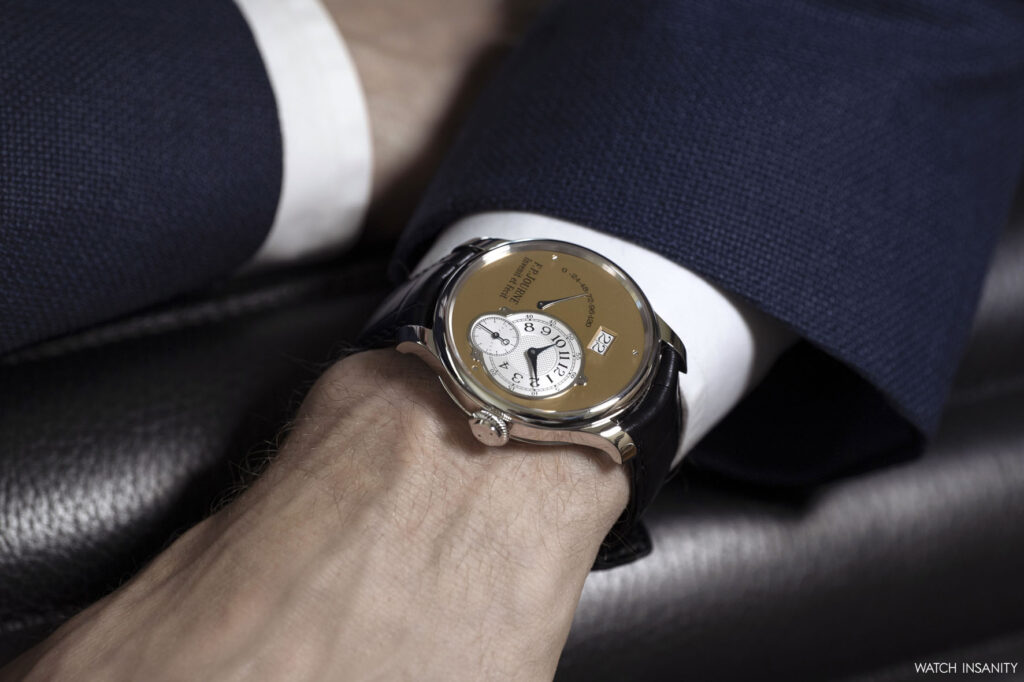
It is no coincidence that Monsieur Journe spoke about this movement stating: “The construction of the Octa caliber has less powerful ties with horology history than the constant-force device or the resonance models, but it symbolizes a horological ideal of providing timekeepers with the highest possible degree of precision and autonomy.” These words, coming from a man who is famous for his silence, sound even more precious.
By Davide Passoni

